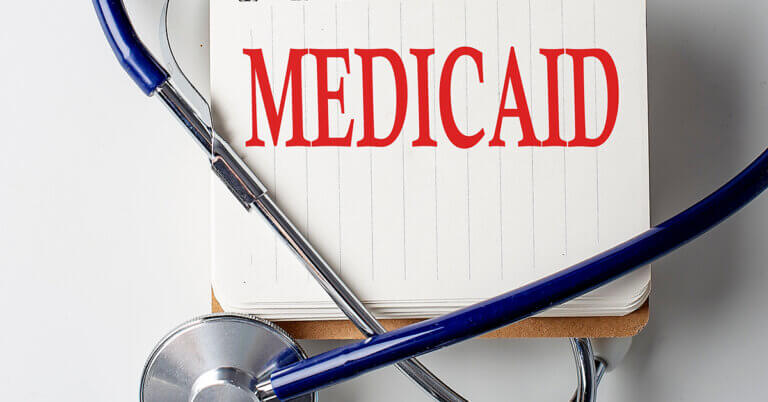June 28, 2022

Separate And Unequal (Part 2): Overcoming Healthcare’s Profound Facilities Maldistribution
Editor’s note: This series asks if proposed regulations will help advance health equity and improve maternal-health outcomes or add burden without improving health access.
Part 1: Healthcare’s Profound Maldistribution of Facilities
Part 2: Overcoming Healthcare’s Profound Facilities Maldistribution
In Part 1 of “Separate and Unequal,” I took the Biden Administration to task for its proposed 2022 regulatory initiatives to advance health equity and improve maternal-health outcomes. These initiatives include five new reporting measures for hospitals and a new “birthing-friendly hospital” designation. My complaint is that they add to hospitals’ regulatory burden without improving health access and service provision for people living in low-income communities.
To illustrate, I compared adjacent communities in west Chicago. Affluent Oak Park and River Forest have abundant access to comprehensive, round-the-clock healthcare services for a population of 66,000 residents. Healthcare facilities located within this community include three hospitals (including West Suburban Hospital bordering Oak Park and Austin), numerous urgent-care centers, two homecare centers, an ambulatory-surgery center, a sports-medicine clinic, a rehabilitation clinic and a sleep center.
 By contrast, the low-income Austin community has no hospitals and just four primary-care clinics serving its 97,000 residents. This is woefully inadequate. These clinics only operate during normal business hours. Just two are open Saturday mornings. None are open on Sundays. Given the dearth of healthcare facilities and high levels of chronic disease, it’s tragic but not surprising that life expectancy in Austin is 11 years lower than in Oak Park/River Forest.
By contrast, the low-income Austin community has no hospitals and just four primary-care clinics serving its 97,000 residents. This is woefully inadequate. These clinics only operate during normal business hours. Just two are open Saturday mornings. None are open on Sundays. Given the dearth of healthcare facilities and high levels of chronic disease, it’s tragic but not surprising that life expectancy in Austin is 11 years lower than in Oak Park/River Forest.
The Biden administration should know better. New regulations on hospitals cannot improve healthcare access or equity for Austin’s residents. The separate-and-unequal healthcare system they confront is as bad or worse than the “separate-but-equal” educational system that the Supreme Court outlawed in its landmark Brown vs. Board of Education decision in 1954.
Healthcare’s Real Problem
The primary villain robbing low-income Americans of better health and longer life is volume-driven, fee-for-service (FFS) medicine. Expecting to improve health status, equity and access without major payment reform defies logic and prolongs misery. America won’t change the way it delivers healthcare until it changes the way it pays for healthcare.
The allure of treating patients with lucrative commercial health insurance under FFS contracts is so strong that West Suburban Hospital moved its main entrance off Austin Avenue to attract more patients from Oak Park and River Forest. West Suburban also opened new specialty-care centers in Oak Park/River Forest to draw more commercially-insured patients into its facilities.
West Suburban isn’t unique. Almost all U.S. hospitals manage operations to optimize revenue inflows and profits, not to generate the most cost-effective outcomes. It leads to enormous waste and a profound misallocation of healthcare resources.
Despite the waste, a recent American Hospital Association report pleads for more funding to offset rising labor, supply and drug costs. Meanwhile, the West Health-Gallup Healthcare Value Index finds 95% of American adults think the quality of care they receive is “inconsistent” or “poor” relative to its perceived value. It’s clear that the nation’s current model for providing healthcare services isn’t sustainable.
Healthcare’s main challenge, however, isn’t a lack of funding. At 20% of the U.S. economy, America already spends more than enough to provide great healthcare services to everyone in the country. Healthcare has a distribution, not a funding, problem. More of the same healthcare spending will generate more of the same crappy and unfair outcomes.
From a distribution perspective, reducing the nation’s healthcare disparities isn’t rocket science. It requires political will and an openness to new thinking. In essence, America must spend less on acute care services and invest more in health promotion, chronic disease management and behavioral health services. It’s that simple. A trip to Chicago’s South Side reveals how this may be possible.
Mercy Me, More Hospitals Aren’t the Answer
Many healthcare policy analysts cite the closure of urban and rural hospitals in low-income communities as the primary factor creating disparities in healthcare access. These analysts have a major blind spot.
Most hospitals facing closure operate in antiquated facilities with poor safety records and subpar outcomes. They double down on acute treatment services to maintain financial viability. They don’t meet their community’s vital health and healthcare needs. Most should close, but that shouldn’t be the end of the story.
Rather than retrofit outdated facilities, America should build sustainable health networks in medically-underserved communities. This was what Mercy Hospital and Medical Center envisioned when it proposed to merge with three other safety-net hospitals in January 2020.
Located on the near South Side, Mercy became Chicago’s first hospital in 1852. It survived the great Chicago fire, treated President Teddy Roosevelt and was the birthplace of future Mayor Richard M. Daley. More recently, Mercy had suffered severe operating losses serving a disproportionately low-income population in aging facilities. The once-storied institution was no longer financially viable.
Facing this dismal reality, Mercy, Advocate Trinity Hospital, South Shore Hospital and St. Bernard Hospital announced their intention to merge into a single South-Side health system. The proposed system had a bold and breathtaking vision: to transform healthcare delivery throughout Chicago’s South Side.
Under the privately-funded $1.1 billion plan, the four existing hospitals would cease operations. In their place, the new system would build a single new hospital, several ambulatory facilities and aligned community health centers. They would offer integrated health records, coordinated care delivery, and consumer-friendly digital access. Their service model emphasized prevention, wellness, chronic disease management and behavioral health.
The hospitals asked the State of Illinois to cover their financial losses until the new facilities became operational in four to five years. In May 2020, the Illinois General Assembly was set to pass legislation creating a $500 million Hospital Transformation Fund for this purpose. On the final day of the legislative session, key South Side representatives pulled their support, citing concerns about hospital closures and potential job losses.
Without the Transformation Fund, Mercy and the other safety-net hospitals ended their planned merger. In a letter to the Illinois Department of Healthcare and Family Services (HFS), the four hospital CEOs expressed “grave concerns” that the legislature’s actions would lead to more hospital closures, service cuts and decreased healthcare access for South Side residents.
At a press conference discussing the legislative session, Governor J.B. Pritzker indicated his support for hospital transformation legislation but noted “with so many things in flux about our state budget, it was nearly impossible for the General Assembly to go forward [with the Transformation Fund].” In essence, the Governor said Illinois could not afford to make the investment in transformative healthcare.
Ironically, maintaining the inadequate status quo is even more expensive. The four hospitals lost $79 million cumulatively in 2019. Given anticipated statewide declines in volume and reimbursement even before the pandemic, it will cost Illinois hundreds of millions to subsidize the state’s money-losing safety-net hospitals to maintain 2019 services levels.
The status quo needs replacing. At the time of their proposed merger, Mercy had a 1-star (out of 5) quality rating from the Centers for Medicare and Medicaid Services. Advocate Trinity, South Shore and St. Bernard had 2-star ratings. Their combined occupancy was below 50% and declining.
Speaking on behalf of the merging hospitals, St. Bernard CEO Charles Holland stresses “we recognize that it doesn’t make sense to keep pouring millions of dollars into aging, outmoded, out-of-date healthcare facilities.” Even more disheartening, South Side residents vote with their feet when seeking healthcare services. Over 60% seek care outside the service area.
On July 29, 2020, two months after the merger’s collapse, Mercy announced its intention to close on May 31, 2021. Mercy’s announcement received national attention and triggered an angry community response. In December, the Illinois Health Facilities and Services Review Board rejected Mercy’s closure request, but the hospital continued to wind down operations anyway.
Ultimately, new owners from Michigan bought Mercy for $1 and renamed the facility Insight Health. Insight assumed operational control on June 1, 2021. The new owners eliminated many services lines, including maternity, and plan to revitalize the hospital’s finances by doing more FFS specialty procedures. Sound familiar?
A Silver Lining
While Mercy’s demise is tragic, its bold transformation plan had the elements necessary to improve care outcomes in medically-underserved communities. Management guru Peter Drucker astutely observed that “if you want something new, you have to stop doing something old.” If America wants to transform healthcare, it needs to stop funding outdated hospitals and redirect those monies into sustainable community health networks.
This is what the Veterans Administration has been doing for the last twenty years. The VA has moved away from centralized facility-, physician- and disease-centric healthcare delivery (Healthcare 1.0) to population and whole-person health (Healthcare 2.0). It now intends to fully democratize and decentralize health and healthcare service provision through advanced digital technologies/analytics and application of cutting-edge genomic, epigenomic and proteomic knowledge. This is Healthcare 3.0.
While the rest of the industry struggles to overcome legacy practices rooted in fee-for-service medicine, the VA intends to drive better individual and community health in the following three ways: by addressing the root causes of chronic disease; by promoting holistic care delivery that encompasses physical, mental and spiritual well-being; and by using outcomes-based data to guide earlier and more effective diagnosis and treatment.
The VA achieves better outcomes at lower costs for a sicker population than either Medicare or Medicaid. It can pursue this enlightened approach because it funds and administers all veteran care services. With funding comes the power to instigate care transformation.
Federal and state governments fund almost all healthcare services delivered to low-income communities. Just like the VA, they have the power to allocate resources to promote better, more appropriate and more effective delivery of social and healthcare services.
Developing payment models that reward care outcomes and promote well-being is the obvious solution. With the right incentives, CMS can unleash the American innovation engine to solve the nation’s glaring access and equity challenges in healthcare. The success of dual-eligible funding models testifies to the effectiveness of risk-based, direct-contracting payment models.
Rather than tinker with hospital reporting requirements, the Biden Administration should experiment at scale with direct-contracting programs that embrace the type of transformation envisioned for Chicago’s South Side. Aligned and equitable healthcare is what Chicago’s South Side, Austin and other disadvantaged communities require to thrive. No one deserves it more.
In Part 1 of “Separate and Unequal” 4sight Health’s David W. Johnson shows the disconnect between healthy patients and a broken system.





